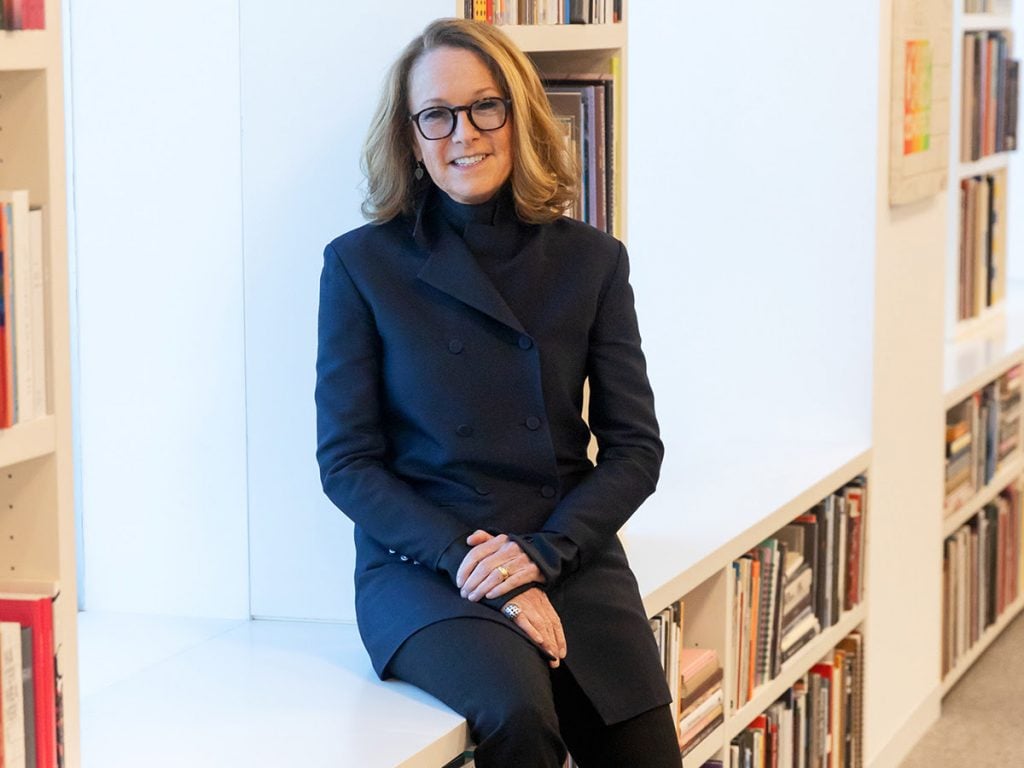Museums & Institutions
Hammer Museum Director Ann Philbin, Who Led the Institution’s Dramatic Growth Over a Quarter-Century, Will Retire in 2024
Among the initiatives taken up by the museum under her leadership is the “Made in L.A.” biennial.

Among the initiatives taken up by the museum under her leadership is the “Made in L.A.” biennial.

Brian Boucher

One of today’s most influential American museum directors, Ann Philbin will retire from her post at the Hammer Museum at UCLA on November 1, 2024, bringing to an end a quarter-century in the post. Philbin’s tenure has coincided with—and helped to drive—an explosion in the city’s art scene, from a backwater to a major art-world hub, with an expanding number of museums and an outpost of the Frieze art fair, along with countless artists calling the city home.
“It has been the privilege of a lifetime to lead the Hammer Museum for more than two decades, working closely with our supremely dedicated boards and brilliant staff to make this institution everything that Los Angeles and our wider community deserves,” Philbin said in a press release. “We have always said that the artists of Los Angeles are our core audience—and I think that in the way we have innovated in our programs and transformed our facilities, we have created a true ‘artists’ museum’ for them.”
Since taking over, she elevated the museum’s annual budget from $6 million to $30 million, and its endowment from $35 million to north of $125 million. Attendance has more than quadrupled. Her announcement comes months after a dramatic expansion to the museum in collaboration with Michael Maltzan Architecture, adding 40,000 square feet of new exhibition, administration, and public space, including a new main entrance and expanded street-level galleries. The museum has also expanded its collection by some 4,000 contemporary artworks.
Perhaps the highest-profile addition to the museum’s programming under her tenure has been the “Made in L.A.” biennial, which has seen six editions. There has also been the signature series of Hammer Projects, contemporary exhibitions featuring American and international emerging artists.
When Artnet News picked her as a potential director of New York’s Metropolitan Museum of Art in 2017, she had already engaged major curatorial talent, recruiting Connie Butler from the Museum of Modern Art in New York and Anne Ellegood, formerly of the Hirshhorn Museum and Sculpture Garden in Washington, D.C.
Philbin has also curated a number of exhibitions, of artists including Lee Bontecou and Lee Mullican. The institution has organized numerous notable traveling shows under her leadership, including “Now Dig This! Art and Black Los Angeles 1960-1980” (2011), curated by Kellie Jones; “Radical Women: Latin American Art, 1960-1985” (2017), curated by Cecilia Fajardo-Hill and Andrea Giunta; and “Joan Didion: What She Means” (2022), curated by Hilton Als.
She has overseen the museum’s retrospectives of artists including Frances Alÿs, Andrea Bowers, Mark Bradford, Jimmie Durham, Llyn Foulkes, Christian Marclay, Frances Stark, Alina Szapocznikow, and Rachel Whiteread.
She has also invited celebrities to participate in programming and marketing exhibitions in a way that is perhaps in keeping with the city’s star-studded culture but raised some hackles. She invited actor and collector Steve Martin to curate an exhibition of artist Lawren Harris; Will Ferrell and Joel McHale helped promote the group show “Stories of Almost Everyone” in a comedic video.
Philbin is known for her grit, having stood up to powerful figures like Los Angeles collector Eli Broad. As the Los Angeles Times reported in 2018, she blocked Broad from using millions of dollars from the sale of a Leonardo da Vinci drawing the museum owned to establish what became the Eli and Edythe Broad Art Center at UCLA.
Philbin was previously director of New York’s Drawing Center for nine years, before which she was an independent curator organizing large public art exhibitions.
“When I came here,” Philbin told the L.A. Times in 2018, “L.A. was considered not at all an interesting city for art. But in these two decades, it has become the red hot center, arguably in the world. Artists are moving here from Berlin, South America, a lot from Europe. The environment here is not about making money, it’s about making art.”
More Trending Stories:
Four ‘Excellently Preserved’ Ancient Roman Swords Have Been Found in the Judean Desert